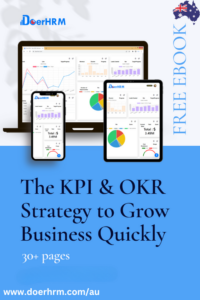In today’s disruptive workplace, leaders are accountable for building winning teams that contribute to the organisation’s bottom line. While there is no secret recipe for building such a team, several tried-and-true principles can serve as the Holy Grail in this effort.
Accepting that there is no perfect person or flawless team is critical for developing strong teams. Only exceptional managers understand how to bring out the best in each of their team members. Winning teams are the result of excellent management.
Leadership is no longer about grand gestures, but rather about keeping teams motivated and engaged. Instead of focusing on individual brilliance, it is important to empower those around you.
For example, if you are in charge of a sales team, you will most likely have certain crucial indicators related to revenue and the number of transactions done. Your team members will have individual KPIs that roll up, but you will most likely own the team total.
A product leader may manage measures such as NPS ratings or product adoption; finance team leaders may have financial KPIs to measure success for their team’s employee effectiveness, and so on in other cross-functional departments.
In addition to essential team performance measures, you may wish to track key leadership metrics related to your success as a leader. Measuring key performance indicators (KPIs) related to your leadership will help you develop your abilities in this critical area.
Updating progress on leadership KPIs weekly keeps this important part of your position front and centre in your work rhythm; however, some employee performance KPIs may be monitored on a different time period, such as monthly.
Our experience has shown that the shorter the time frame, the better because you can provide feedback and coaching before things get too far off track; just make sure they are clear, quantifiable, and actionable when developed during team planning.
KPIs for Team Leaders who want to build winning teams
Key performance indicators (KPIs) for team leaders are some of the most essential measures you can create to drive overall team performance and reward top performers.
With this in mind, the following are the six must-have KPIs for leaders who want to build winning teams:
Training hours or funds invested in your employees
Part of your job is to ensure that your team has the skills and knowledge needed for their present duties as well as the roles they will fill in the future as your business expands.
Team Retention
It is critical to develop and retain your top employees. You might wish to track a KPI for team turnover or retention. Promotions within your team might be another useful metric.
Employee Satisfaction
To measure employee satisfaction, some companies utilise employee satisfaction surveys or more regular “pulse” surveys; if you have data like this categorised for your team, it might be beneficial. It may not be a useful KPI to assess on a weekly basis; instead, you should investigate what the leading indicators of happiness on your team are and measure those instead.
eNPS
Once again, these are lagging indicators of employee engagement that are most likely monitored on a yearly or quarterly basis rather than monthly. You might look for trends in the feedback for why your team members score the way they do for your weekly KPI dashboard and attempt to measure performing more of the things they value or find more interesting.
1:1 Meetings with Team Members
Frequent touch points and real-time feedback can be quite beneficial. Spending time with your direct reports, especially in a casual environment such as lunch or coffee, may be an effective method to establish trust and improve relationships. Taking the effort to get to know your team members as people (what is important to them and their goals) can help you lead your team more effectively. Attending team meetings is also a good idea, but don’t come up unexpectedly!
Team Health Index
This is a basic “gut-check” indicator that we use to determine whether any team members are overburdened or overstuffed. It informs leaders about who has the capacity for increased work and who requires assistance (or when we may need to hire additional resources to share the workload.)
Here are also some KPIs for team leaders who wish to track their own progress:
- Weekly Accountability Reflection
One element of leadership success is regularly reflecting on one’s own performance. Spend time each week reflecting on and even journaling about what you are doing well, what you are learning, and how you might develop as a leader.
- Weekly Keep Smart and Think Time
In addition to investing in team learning time, you should focus on increasing your personal performance by continuing your own learning. Being an effective leader requires strategic thinking and vision-casting, which do not happen overnight; it takes time to think about and grow ideas for the future.
- Specific Performance Metrics that track your success in enhancing specific leadership or work abilities
You should have a Personal Path of Progress or Peak Performance Plan in place that identifies particular talents to enhance, whether those skills are leadership or work performance. As KPIs, you may measure your success in learning those specific skills or establishing new habits.
Using KPIs to make a positive change
When you are certain that you have relevant KPIs in place to measure the success of your team and your business as a whole, ensure that the necessary training, support, and incentives are in place to allow your employees to perform well.
When developing your rewards and recognition systems, be certain that they are directly related to the KPIs you’ve established and that you are not encouraging possibly counterproductive activities.
Rewarding employees for fewer complaints, for instance, contradicts the message you’re trying to convey if you’re attempting to measure how well they handle customer complaints.
You would think that the fewer complaints you receive, the better your customer service must be. However, this is not always the case: you may be receiving fewer complaints because you have fewer customers, or because your customers are unable to reach your support services.
If your company wants to acquire new customers, you can create a KPI that tracks how many new customers you gain each week. A well-aligned performance system may compensate employees based on the number of new customers they individually help to recruit, depending on the scenario.
When it comes to team leader KPIs, there are several options. A balanced assessment of how effectively a team leader connects with their employees on a human level, on the other hand, may give a well-rounded image of a team leader’s success.
These are just a few examples; your list may not contain any of them, but perhaps this list gets you thinking about the kinds of metrics you might add to your KPI dashboard to enhance the “softer” aspects of your leadership.
These KPIs enable leaders to gain influence and inspire their employees to push personal boundaries, obstacles, and belief systems in order to establish an equal and growth-friendly atmosphere.
Best practice also favours a “less is more” strategy to expand and provide excellent customer service – without causing confusion or competing interests. When done correctly, these KPIs may serve as strong main pillars of employee engagement.
And that’s why it’s critical that selecting KPIs isn’t a one-time event and that it’s done on a regular basis in accordance with company goals and priorities!
Conclusion
When it comes to team leader KPIs, there are several options. A balanced assessment of how effectively a team leader connects with their employees on a human level, on the other hand, may give a well-rounded image of a team leader’s success.
These are just a few examples; your list may not contain any of them, but perhaps this list gets you thinking about the kinds of metrics you might add to your KPI dashboard to enhance the “softer” aspects of your leadership.
These KPIs enable leaders to gain influence and inspire their employees to push personal boundaries, obstacles, and belief systems in order to establish an equal and growth-friendly atmosphere.
Best practice also favours a “less is more” strategy to expand and provide excellent customer service – without causing confusion or competing interests. When done correctly, these KPIs may serve as strong main pillars of employee engagement.
And that’s why it’s critical that selecting KPIs isn’t a one-time event and that it’s done on a regular basis in accordance with company goals and priorities!










Reading your article has greatly helped me, and I agree with you.
Your article helped me a lot, is there any more related content? Thanks!
I am a website designer. Recently, I am designing a website template about gate.io. The boss’s requirements are very strange, which makes me very difficult. I have consulted many websites, and later I discovered your blog, which is the style I hope to need. thank you very much. Would you allow me to use your blog style as a reference? thank you!
Your article made me suddenly realize that I am writing a thesis. After reading your article, I have a different way of thinking, thank you.
Thank you for your sharing. I am worried that I lack creative ideas. It is your article that makes me full of hope. Thank you. But, I have a question, can you help me?